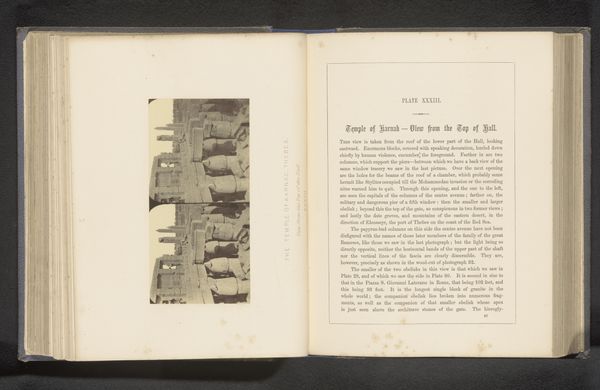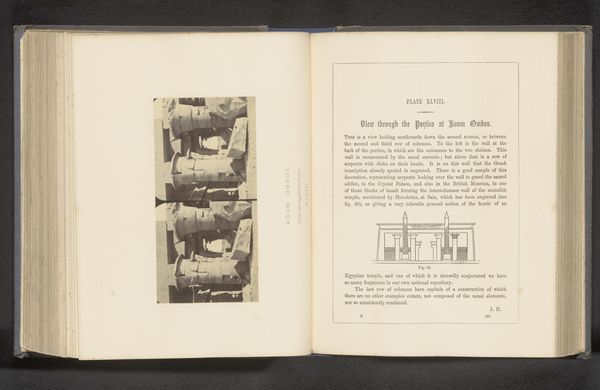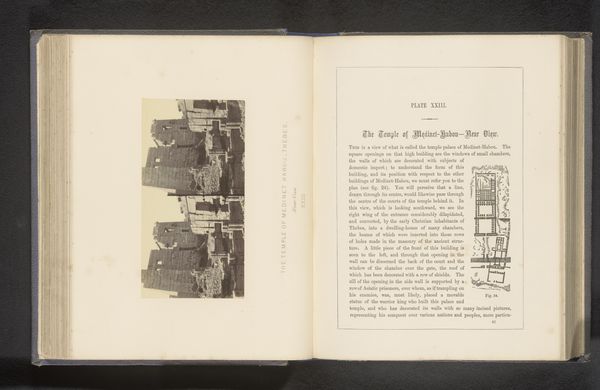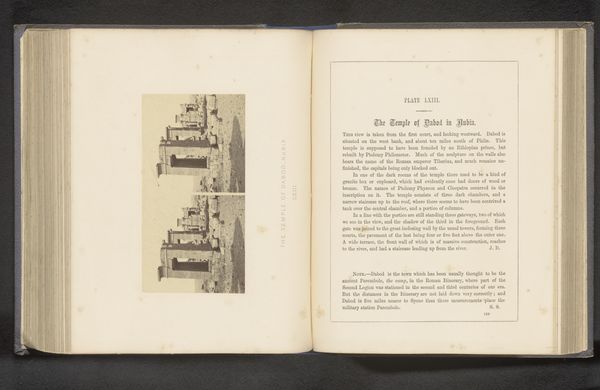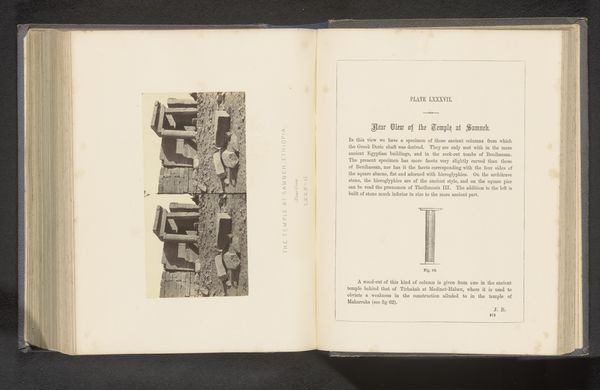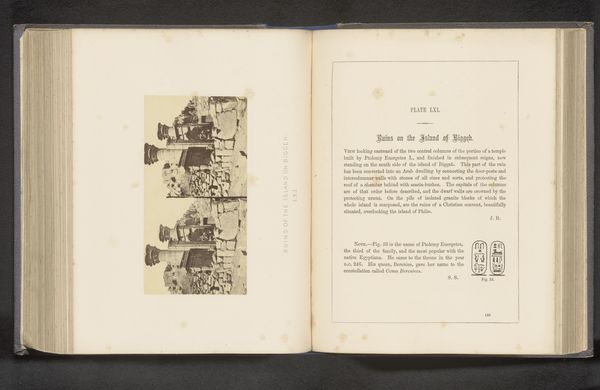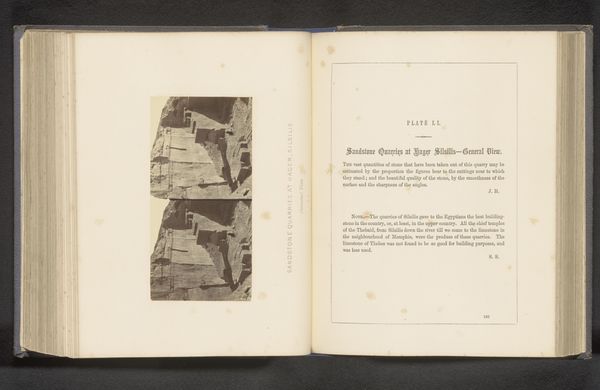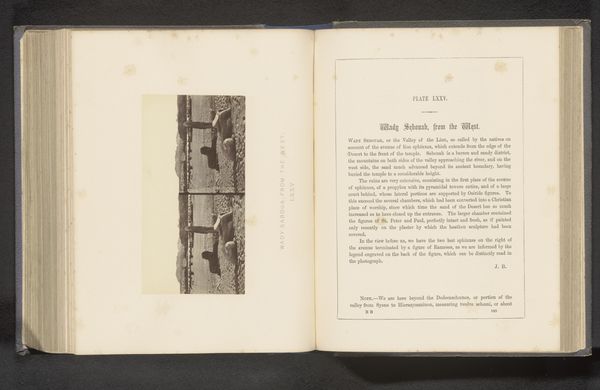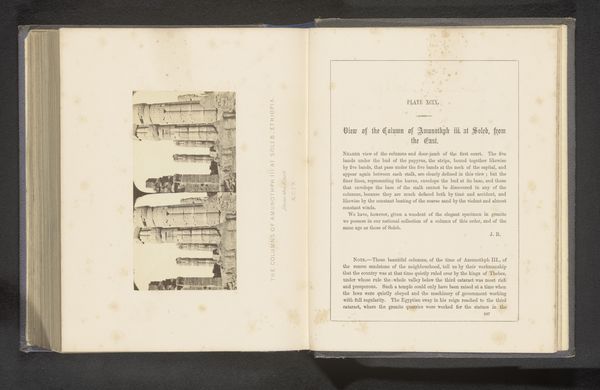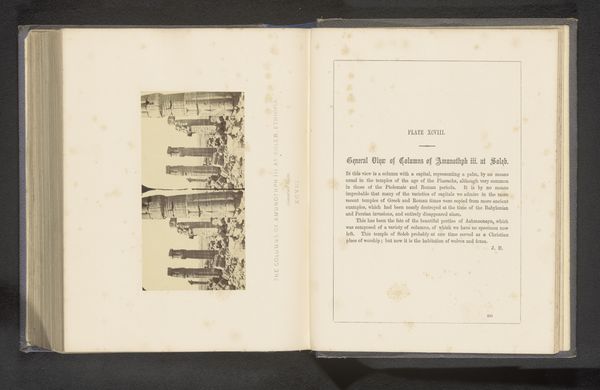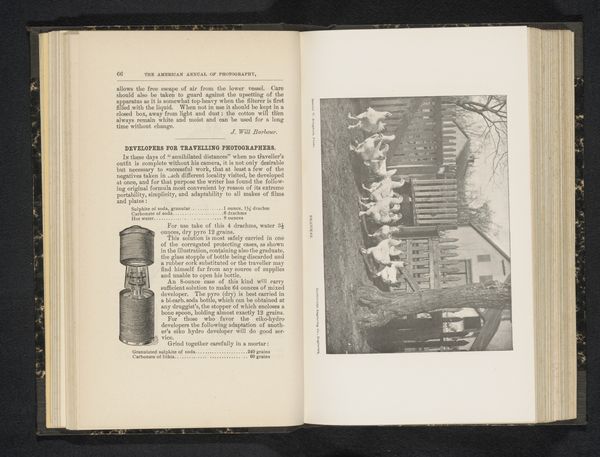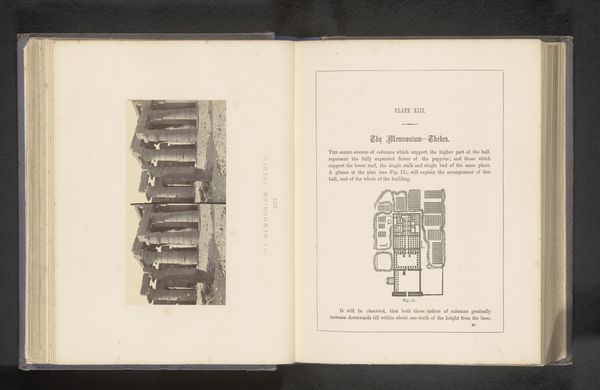
Dimensions: height 72 mm, width 139 mm
Copyright: Rijks Museum: Open Domain
Editor: This is Francis Frith’s photograph, "Gezicht op de ruïnes van tempelcomplex Karnak," taken before 1862. It's a gelatin-silver print currently held at the Rijksmuseum. It has an incredibly striking quality... what can you tell us about what we're seeing? Curator: The image of Karnak isn't just a document of ruins, but a powerful symbol of a lost world. Frith’s work captures not only the physicality of the site but the emotional weight of its history. Consider the deliberate composition. What feeling does that evoke for you? Editor: A sense of distance, maybe? Or immense age, seeing such a grand structure so decayed. Curator: Precisely. And isn't it fascinating how ruins hold meaning across cultures? The ruined temples become symbols of faded power. Think about how this contrasts with ancient Egyptian beliefs about eternal life and permanence. Editor: So, the ruin itself becomes a symbol, almost a commentary? Curator: Yes. This interplay between the physical remnants and the ideas they embody shapes how we understand history and even ourselves. Frith's photo immortalizes an instant and suggests at the infinite. What’s your sense of the intent, then? Editor: I guess I see how it preserves something of the original symbolic power of Karnak. I came in expecting just a landscape photo, but I now appreciate all the layers of historical and cultural symbolism that the image holds! Curator: And I find myself pondering the ongoing legacy of ancient Egypt and how photographs can reveal, and even reinforce, its continued presence in our collective imagination.
Comments
No comments
Be the first to comment and join the conversation on the ultimate creative platform.
